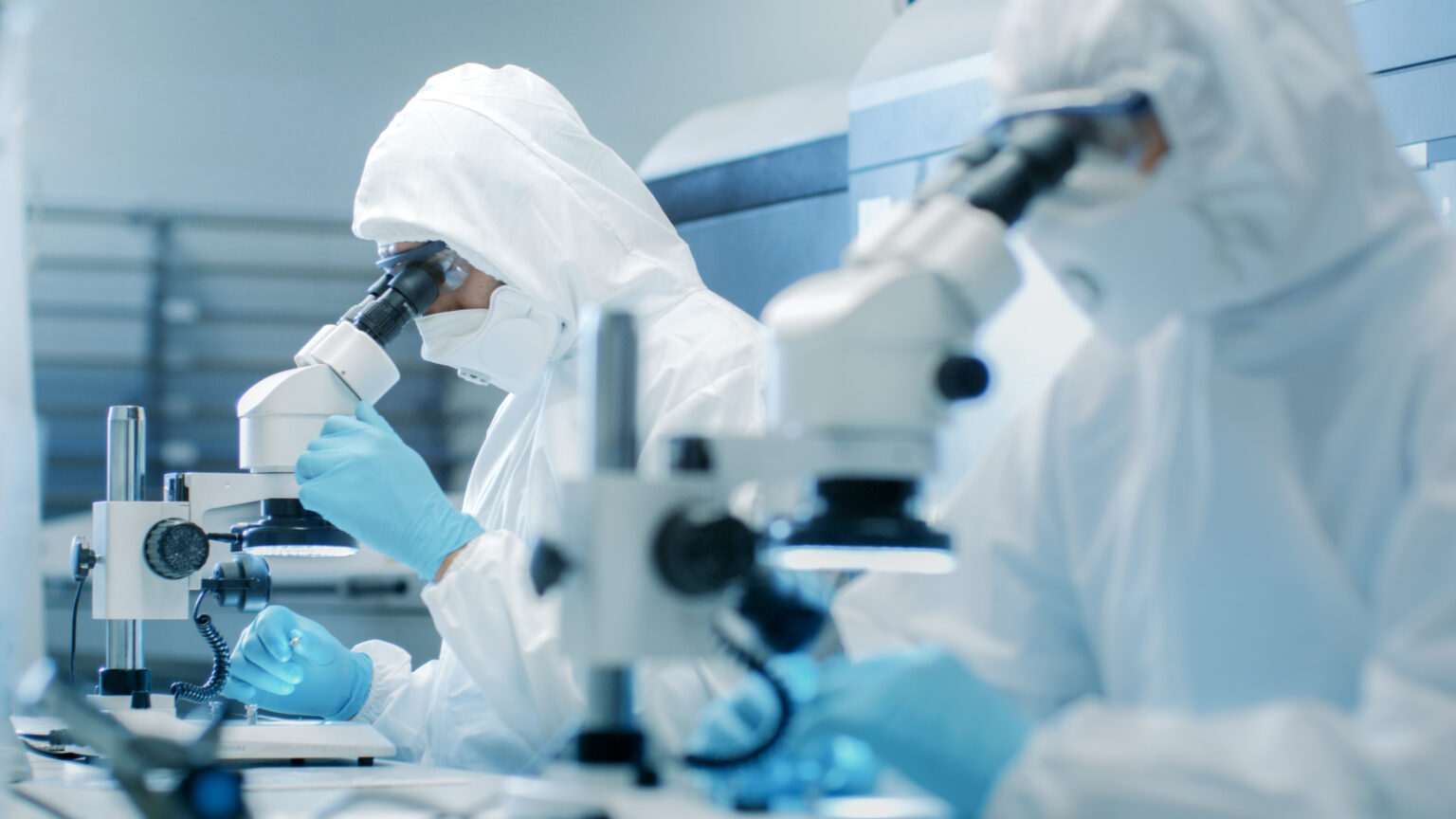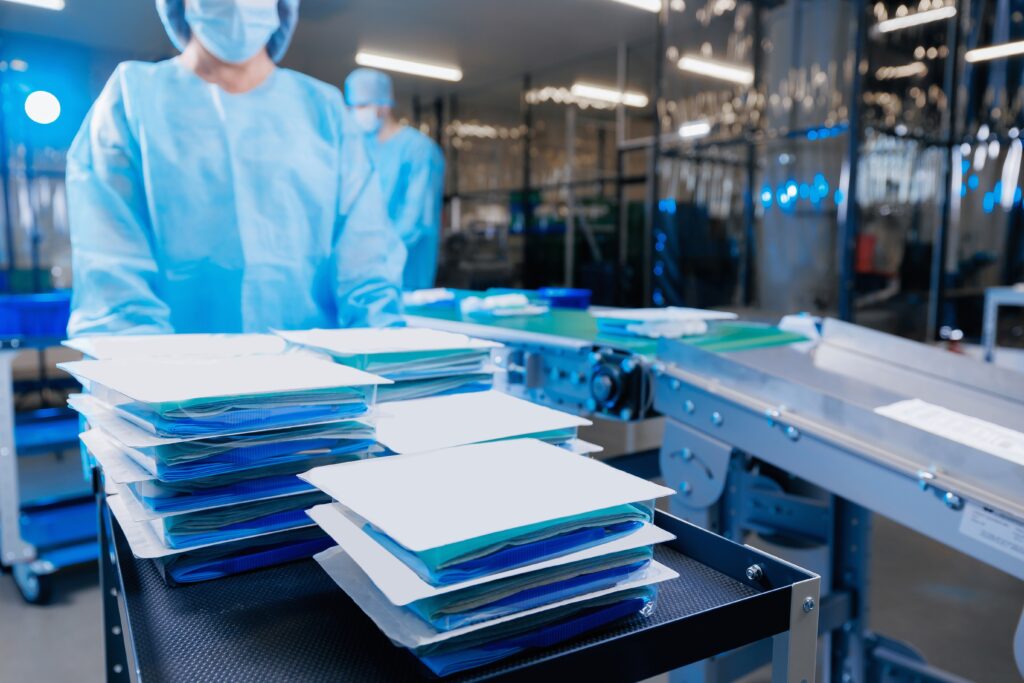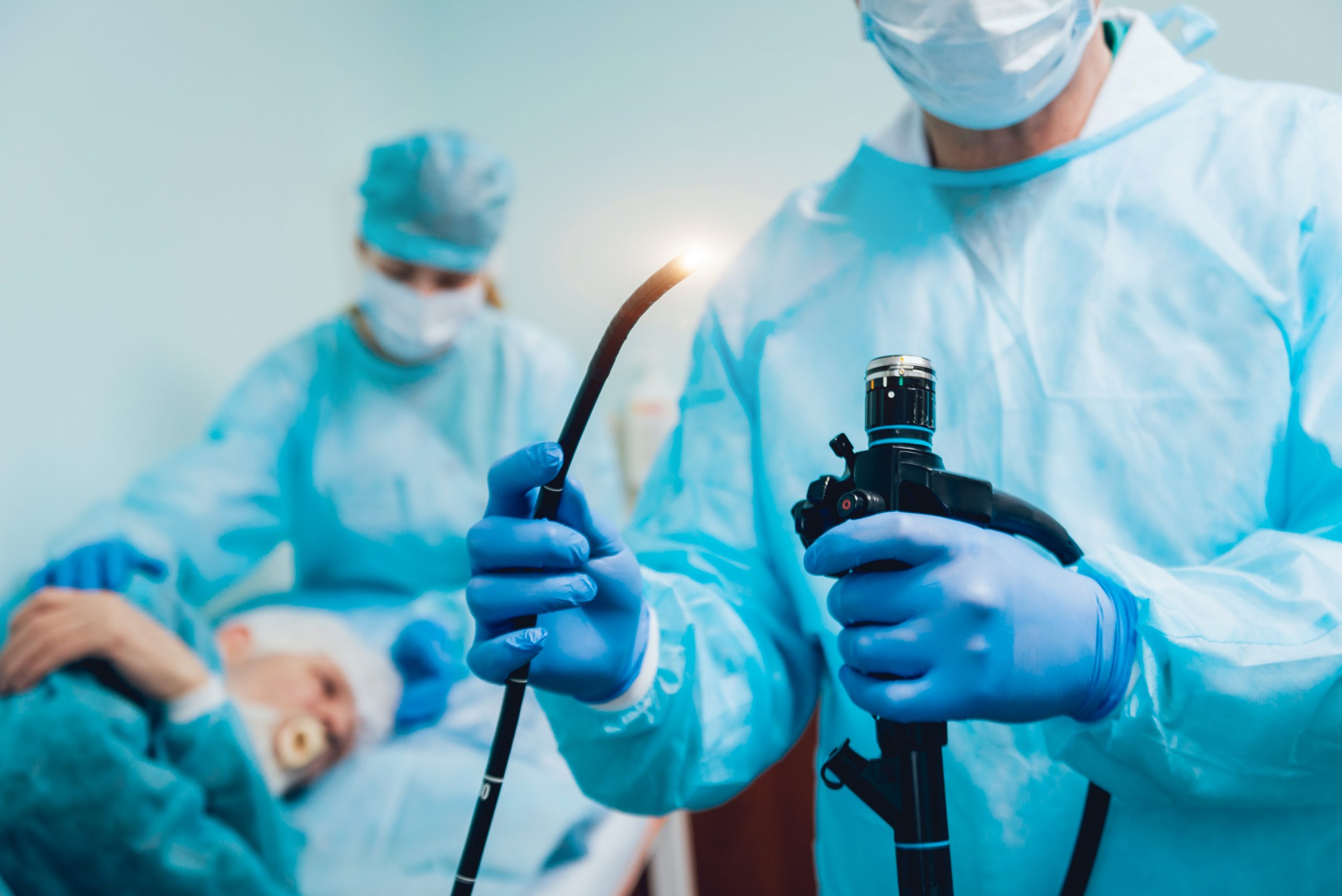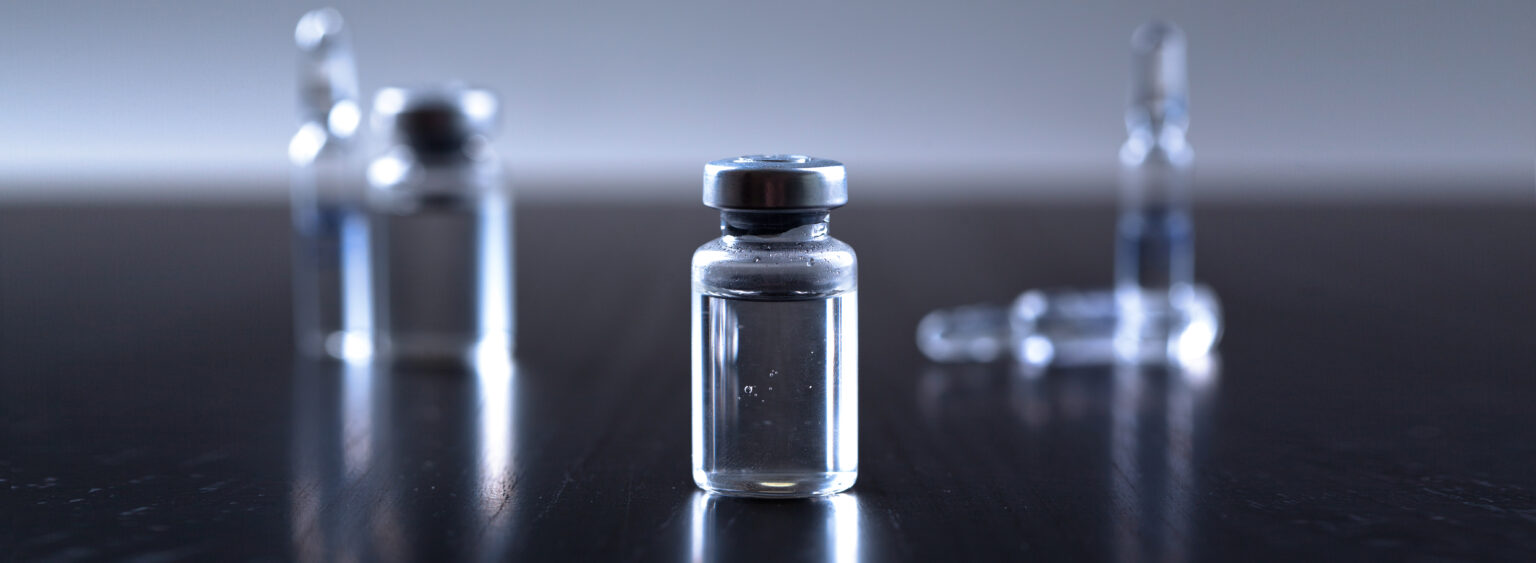
May 29, 2025
Anne M. Schuler
Method Validation, Bioburden Analysis, Sterility Testing, Endotoxin Assays, Lot Release Quantities, Bacterial Endotoxin Testing
Quality Control, USP <71>, USP <85>, ISO 11737-3
Frequently Asked Questions About Microbiological Testing for Medical Devices and Pharmaceuticals
Medical Device manufacturers must meet rigorous microbiological requirements to ensure product quality and patient safety. This FAQ addresses several important considerations related to sterility, bioburden, endotoxin testing, and method validation—offering guidance on topics that often arise during product development, lot release, and routine quality control.
Quick Navigation
Why do certain tests require a method validation before performing routine testing?
Certain tests such as bioburden analysis, sterility testing, and endotoxin assays require the intended test method be validated to demonstrate that the test article does not interfere with the method and that the method is reliable, and reproducible for its intended use. Each product has unique characteristics — such as formulation, material composition, or surface properties — that can influence test outcomes. A method that performs well with one product might not yield accurate or consistent results with another. Validating the method ensures the test performs as expected with the product’s specific attributes. Regulatory agencies and notified bodies expect test method for certain assays be validated to ensure the validity of the resulting data. Not all assays require validation, we can help you guide you through this process to ensure your products are properly tested with results you can depend on.
What quantities are required for lot release testing?
Pharmaceutical manufacturers of sterile injectables typically perform USP <71> Sterility and USP <85> Endotoxin lot release testing. The quantities required as stated in the USP are as follows.
| Number of Items in the Batch | Minimum Number of Items to be Tested for Each Medium1 (unless otherwise justified and authorized) |
|---|---|
| Small Volume Parenteral preparations | |
| Not more than 100 containers | 10% or 4 containers, whichever is the greater |
| More than 100 but not more than 500 containers | 10 containers |
| More than 500 containers | 2% or 20 containers, whichever is less |
| For large-volume parenterals | 2% or 10 containers, whichever is less |
1 Two (2) medias are used for testing.
| Lot / Batch Size | Number of Samples |
|---|---|
| <30 | 2 |
| 30 – 100 | 3 |
| ≥ 100 | 3% to not exceed 10 |
Do I need bacterial endotoxin testing if my device has cardiovascular system, lymphatic system, or cerebrospinal fluid contact?
Yes, bacterial endotoxin testing is required if your device comes into contact with cardiovascular, lymphatic, or cerebrospinal fluid systems and is labeled as non-pyrogenic. The bacterial endotoxin test (BET) is an in vitro assay for detection and quantification of bacterial endotoxins, a component of the cell wall of gram-negative bacteria, ISO 11737-3 specifically addresses the quantitation and significance of endotoxins on a medical device, providing a framework for establishing and validating acceptable endotoxin limits based on the device’s intended use and route of administration. The endotoxin limit for medial devices is not more than 20.0 EU/device unless the device will have contact with cerebrospinal fluid, in which case the limit 2.15 EU/device. Ophthalmic implants and OVD’s may be required to meet a lower limit of 0.2 EU/device or 0.2 EU/mL.
My bioburden counts have spiked recently, what actions should I take to reduce the counts?
If your bioburden counts have recently spiked, this signals a potential deviation in your manufacturing process or contamination control strategy, and it’s essential to take prompt, structured action to maintain product cleanliness. Start by conducting a thorough investigation to identify the root cause. Review recent changes across your production process—including raw material sourcing, operator handling, cleaning protocols, environmental controls, and equipment maintenance. Even minor changes, such as a new supplier or modified packaging procedure, can introduce microbial variability. Environmental monitoring data from associated areas should be analyzed for elevated microbial loads, as a spike in airborne or surface contamination may correlate with your bioburden increase. It’s also advisable to perform microbial identification on the recovered organisms to assess whether they originate from human flora, raw materials, water sources, or environmental vectors, which can guide targeted corrective actions.
Next, trend your bioburden data to determine whether the increase is isolated or part of a broader shift. Compare current results with historical averages and alert/action limits. Immediate corrective actions might include intensified cleaning, retraining personnel on aseptic handling, inspecting air filtration systems, or performing preventative maintenance on equipment. Long-term process improvements may involve revising gowning procedures, redesigning workflows to reduce contamination risk, or reevaluating raw material bioburden control measures.
Document the full investigation, including the root cause analysis, corrective and preventive actions, and any revalidation activities. Update your risk assessments, SOPs, and bioburden control strategies as needed to reflect a more robust understanding of your process variability. Consistent monitoring and swift resolution of bioburden spikes are essential for ensuring continued product safety, regulatory compliance, and patient protection.
Need Help With Your Testing Strategy?
LexaMed offers expert guidance and full-service testing to support your microbiological quality programs. If you have questions or need help with method validation, test design, or interpreting results, contact our team today at [email protected]!

April 7, 2025
Jim G. Whitcomb
Sterility Assurance Level, Ethylene Oxide (EO), Gamma, E-Beam, Steam, Bioburden Determinations, Protocol Report Generation
Quarterly Dose Audits, Cycle Development, Bacterial Endotoxin, Population of Biological Indicators, D-Value Determination
Sterilization concepts can be a confusing and formidable challenge for companies looking to establish a sterilized product. For those looking for assistance with establishing a sterilization process for their product, LexaMed can help. LexaMed has the in-house expertise and laboratory testing capabilities to help manage all aspects of sterilization process validations.
For many types of medical devices and pharmaceuticals, a sterile condition is required for obvious infection prevention reasons. The definition of sterile means the absence of viable microbial organisms. While this is a simple definition, the determination or measurement of whether a product is “sterile” is not as simple. Since microorganisms are too small to be seen with the naked eye, a sterile condition cannot be detected by visual inspection. A test for sterility on every sterilized item is impractical due to its destructive nature. Therefore, the state of being sterile can only be described in terms of the probability that viable microorganisms are present.
Sterilization process validation using any sterilization method involves three essential steps. These steps include defining the level of probability for microbial survival, defining the methods to achieve this level, and demonstrating that equivalent lethal conditions are achieved throughout the full load of commercial products. LexaMed has the resources to assist manufacturers with these three aspects through comprehensive project management, protocol and report authorship, and ISO 17025 accredited laboratory testing.
Useful guidance for defining the level of probability for microbial survival, also known as the sterility assurance level (SAL), can be found in ANSI/AAMI ST67:2019, Sterilization of Health Care Products – Requirements and Guidance for Selecting a Sterility Assurance Level for Products Labeled Sterile. In the United States, most devices and pharmaceuticals labeled as sterile from terminal sterilization processes will require a minimum SAL of 1 potential non-sterile unit in 1,000,000 processed. In mathematical terms, this can be stated as a 1 X 10-6 probability of a non-sterile unit. This SAL will apply to items that are invasive or implanted in the body, have contact with the blood stream, and/or have contact with compromised tissue. Some devices, however, may not be able to withstand the physical stress of a terminal sterilization process required to achieve a SAL of 10-6 and may need an alternate sterile claim. In these cases, a thorough assessment of alternate manufacturing materials or design, modifications to the sterilization process or approach to validation, and consideration of alternate sterilization modalities must be documented before a risk assessment is made to justify support for an alternate sterile claim greater than 10-6 (10-5 or 10-4).
There are options available for methodologies to demonstrate a validated sterilization process. For a gaseous sterilant such as Ethylene Oxide, commonly used strategies are the ‘overkill’ and ‘BI/Bioburden’ methods. These procedures are detailed in nationally recognized documents such as the ethylene oxide standard, ANSI/AAMI/ISO 11135:2014, Sterilization of Health Care Products – Ethylene Oxide – Requirements for the Development, Validation, and Routine Control of a Sterilization Process for Medical Devices. The foundation of these two methods requires establishing a log10 linear death rate kinetic for a biological indicator (BI) placed into the most difficult to sterilize location of a worst-case challenge device, also known as a master challenge device (MCD). In either method, the BI is used as a surrogate for the natural bioburden and must first be shown to have equivalent or greater resistance to the sterilization process compared to the product’s bioburden. LexaMed can provide a detailed rationale for selection of the MCD and BI placement site as well as help determining the optimal procedure for establishing a linear death rate within a custom and comprehensive validation protocol.
Radiation sterilization processes are commonly conducted with gamma, E-beam, or X-ray energy. All three of these modalities use a bioburden-based approach to process validation. Linear death rate curves have been experimentally developed for many microorganisms by subjecting them to varying levels of radiation. All organisms were found to follow a similar model that allows a prediction for microbial survival based on exposure level. This facilitates the prediction of SAL for a particular bioburden level when exposed to a specific radiation dose. A few variations in radiation validation methods are available and are detailed in ANSI/AAMI/ISO 11137-2:2013/(R)2019, Sterilization of Health Care Products – Radiation – Part 2: Establishing the Sterilization Dose.
The final important step for sterilization validation involves demonstrating that similar lethal conditions exist within all points of the entire product load to be processed. This is a physical aspect that typically involves measurement of critical variables of a process such as energy dose, temperature, humidity, or sterilant concentration. These variables are affected by the product’s materials of construction, density, packaging, loading, and distribution within the sterilization chamber or energy field. To measure the physical aspects which impact the lethality of a sterilization process, sensors or monitors are distributed throughout the load in all areas. This data can then be analyzed to ensure that equivalent lethal conditions have been reached across the entirety of a product load.
No matter the sterilization process selected for a particular medical product, LexaMed can help make the process of establishing a sterilization process for your product less daunting. LexaMed offers expert management services that enable a timely completion of your sterilization project and offer consulting to resolve any issue that may arise during processing or testing. LexaMed also offers protocol and report services to provide you with thorough documentation which is essential for smooth navigation through regulatory waters. These documents will include the necessary rationales regulatory officials and notified body auditors are looking to ensure a valid sterilization process has been achieved.
If you have an upcoming sterilization validation project, and you’re not sure where to start, reach out to us at [email protected] and we’d love to help you navigate the world of sterilization validations.
Cleaning Validation for Reusable Medical Devices

March 20, 2025
Anne M. Schuler
reusable medical devices, cleaning validations, reprocessing of reusable medical devices, end-of-life conditioning, AAMI ST98, ISO 17664, medical device IFU, protein analysis, hemoglobin analysis
End-of-life conditioning, 21 CFR 801, instruction for use development
Reusable medical devices are devices that health care providers can reprocess and reuse on multiple patients. If they are not properly reprocessed between use, there is a greater likelihood of microbial transmission and a high risk of infection. Cleaning is the physical removal of soil and contaminants, according to the FDA guidance document Reprocessing Medical Devices in Health Care Settings: Validation Methods and Labeling Guidance for Industry and Food and Drug Administration Staff effective cleaning should:
Therefore, cleaning methods must be validated separately from disinfection or sterilization processes which are validated to demonstrate appropriate microbicidal reduction. A reusable device cannot be effectively sterilized or disinfected unless it is properly cleaned first. Under FDA labeling regulations (21 CFR 801) manufacturers of reusable medical devices must provide written instructions for cleaning reusable devices between use, these cleaning processes must be thoroughly validated to confirm their effectiveness.
At LexaMed, we specialize in designing and executing cleaning validations tailored to each unique device following the guidance provided in the following documents:
Complex device designs may present particular challenges to cleaning and validation therefore our experienced project managers work closely with manufacturers to understand the device and its cleaning requirements in order to generate a protocol that incorporates all elements of the standards such as end-of-life conditioning, soil selection, test methods and acceptance criteria.
Through repeated use, the surface of a device may begin to deteriorate which could lead to soil accumulation therefore devices used for validation testing must be reflective of end-of-life conditions to represent worst case conditions for cleaning. In order to achieve this, prior to use in a validation study, devices undergo simulated use by exposure to a minimum of six (6) cleaning and sterilization or disinfection cycles to condition them for testing. Clients can either perform this step themselves or utilize LexaMed’s expertise.
Following end of life conditioning trained analysts inspect each device to determine the most difficult to clean area such as lumens, hinges and matted surfaces. Devices are then contaminated, focusing on these hard to clean areas, with an organic test soil material that contains clinically relevant components such as hemoglobin, protein, carbohydrates or endotoxin. The device may be soiled by handling with soiled gloved hands and/or complete immersion in the test soil to simulated worst case. Movable parts are actuated during soiling to simulate clinical use. The soil remains in place for a sufficient time to simulate time between patient use and cleaning.
Contaminated devices are cleaned using either the manufacturer’s recommended cleaning process or a process developed as part of the validation. Using the manufacturer’s specified detergent, cleaning is performed using a manual process such as wiping, brushing with a soft bristle brush, flushing, soaking or a combination of these methods. Cleaning may also be conducted using an automated process in a washer-decontaminator. Following cleaning, the devices are visually inspected for residual soil.
Cleaned devices, a negative control device which was cleaned without soiling and a positive control which was soiled but not cleaned are extracted in deionized water and the extracts analyzed by appropriate test methods to determine the level of challenge soils remaining. Test methods used cannot always recover 100% of the soils present on a device due to the various materials of construction and configuration. Therefore, prior to extraction a Recovery Efficiency Study is performed for each challenge soil to determine the percentage that can be recovered during extraction. Using the results of this test, a recovery factor is calculated and then applied to all testing conducted. Multiple extraction method attempts may be necessary to determine the most efficient method for soil removal.
The level of residual challenge organisms remaining following cleaning are then compared to the acceptable levels provided in AAMI ST98 to determine the effectiveness of the cleaning process.
The final step is an evaluation to determine if the cleaning process effectively removed detergent residuals to a safe non-toxic level. A cleaned device is subjected to an ISO Cytotoxicity Test to measure the level of any toxic residuals that may be remaining following the cleaning process.
LexaMed’s cleaning validation services provide manufacturers with independent confirmation that their processes meet regulatory requirements and safety standards. By ensuring medical devices are effectively cleaned and free of harmful residues they can then be effectively sterilized or disinfected ensuring their safety for repeated use.
Effective cleaning of a reusable device is dependent on the materials of construction and design of the product. In the early stages of product development manufacturers of these devices should consider materials and configurations that will facilitate proper cleaning and eliminate such things as mated surfaces and channels which can present challenges for proper cleaning and allow for unwanted soil accumulation. LexaMed’s project managers and scientists have extensive experience in helping manufacturers design reusable devices in a manner to enhance their cleanability to ensure the safe and effective reprocessing of the device.

February 18, 2025
Hayden Rowan
Medical Device Testing, Pharmaceutical Testing, Lot Release Testing, Turnaround Times
Sterility Assurance, USP <71> Bioburden Determinations, ISO 11737-1, Microbial Limits, USP <61>, USP <62>, Bacterial Endotoxin Testing, Limulus Amebocyte Lysate, LAL, USP <85>, AAMI ST72
At LexaMed, we understand that time is critical. That’s why we pride ourselves on delivering the fastest turnaround times in the industry. Whether it’s sterility, bioburden, or endotoxin testing, we consistently exceed industry standards, ensuring you get the results you need – when you need them. With our advanced technology and expert team, we make speed and accuracy our priority, helping you make quick, informed decisions. Choose LexaMed for all routine testing that works at your pace!
LexaMed’s in-house microbiology and chemistry services ensure independent confirmation of test results that are completed with the highest quality and most expeditious manner. LexaMed understands how important lot release testing is to getting your product to the market and we pride ourselves with our turnaround times.
Sterility testing is critical for pharmaceuticals and medical devices that claim to be sterile or free from viable microorganisms. At LexaMed, we conduct rigorous sterility tests to verify the absence of bacteria, fungi, and other pathogens, ensuring your products meet the highest safety and regulatory standards. Method suitability and routine sterility testing is performed in an ISO Class 5 cleanroom and is consistent with USP ⟨71⟩ and ISO 11737-2 guidelines. If all proper documentation is received and prior to 12pm, sterility testing is put on test the same day as our lab receives it.
The Bacterial Endotoxins Test (BET) is an in vitro assay for detection and quantification of bacterial endotoxins for injectable pharmaceuticals and medical devices with direct or indirect contact to the cardiovascular system, lymphatic system, or cerebrospinal fluid. LexaMed offers accurate, reliable, and fast bacterial endotoxin testing to help you meet industry standards. Inhibition/Enhancement validations and bacterial endotoxin assays are tested in accordance with USP ⟨85⟩/⟨161⟩ and ISO 11737-3.
A Bioburden test determines the total number of living organisms in or on a medical device, container or component. It is performed on any product that requires control and/or monitoring of bioburden counts. LexaMed offers a rapid 10-day turnaround for routine bioburden determination, combining speed with unmatched accuracy. Bioburden recovery validations and routine determinations are performed per ANSI/AAMI/ISO 11737-1.

February 7, 2025
Anne M. Schuler
Microbial stability studies, pharmaceuticals, reconstituted drug products, diluted drug products, microbial contamination, microbial hold time study
USP <51>, Antimicrobial Effectiveness Testing
Pharmaceutical companies must go to great lengths to produce a drug product that is sterile and safe for use. When the sterile product is administered immediately after penetration of the container closure system there is no time for microorganisms which may have entered the during penetration to grow. However, many sterile drug products require reconstitution or dilution in a hospital pharmacy prior to use. These prepared drugs may then be held for a period of time prior to administration during which time microorganisms have an opportunity to grow. Manufacturers of non-preserved drugs, that will not be immediately administered to a patient, must demonstrate that the product will not support microbial growth during the labeled storage period under the stated storage conditions.
ICH Guideline Q8 (R2) Pharmaceutical Development states: “Where relevant, microbial challenge testing under testing conditions that, as far as possible, simulate patient use should be performed during development. Additionally, ICH Guideline Q1A (R2) Stability Testing of New Drug Substances and Products provides the following instruction: “Stability testing of the drug product after constitution or dilution, if applicable, should be conducted to provide information for the labeling on the preparation, storage condition, and in-use period of the constituted or diluted product. This testing should be performed on the constituted or diluted product through the proposed in-use period on primary batches as part of the formal stability studies at initial and final time points”
LexaMed performs Microbial Stability Studies (MSS) to evaluate the microbiological stability of drug products under specified storage conditions following reconstitution and/or dilution with specified diluents to demonstrate the product does not support microbial growth throughout storage in its end-use condition.
Test articles are reconstituted and/or diluted with diluents specified in the product labeling and then inoculated with ≤ 100 CFU/mL of the challenge organisms. Challenge organisms include strains listed in USP <51> Antimicrobial Effectiveness Test specifically, Escherichia coli, Pseudomonas aeruginosa, Staphylococcus aureus, Candida albicans, Aspergillus brasiliensis and typical skin flora associated with nosocomial infection. The inoculated test articles are then stored at the storage conditions (temperature and duration) specified in the proposed label. A positive control prepared in the diluent solution and a product negative control (without inoculation) are also included.
Test articles are stored for a period exceeding 2-3 times that of the maximum holding time in the proposed label with samples tested at periodic intermediate timepoints during storage to demonstrate that the diluted product does not support microbial growth for at least the maximum storage period under the specified storage conditions. At each sampling timepoint, surviving viable microorganisms are enumerated using a qualified neutralization method. The change in log10 values of the microbial concentration at each timepoint are calculated and compared to the initial positive control concentration and expressed in terms of log10 change. A test article is considered to have microbial growth if the population is increased by more than 0.5 log10 units compared to the initial value measured. For more information about MSS testing at LexaMed or help with study design please reach out to our subject matter expert, Xiaoqun (Xiao) Zeng by completing the form.
Copyright @ 2025 LexaMed. All Rights Reserved